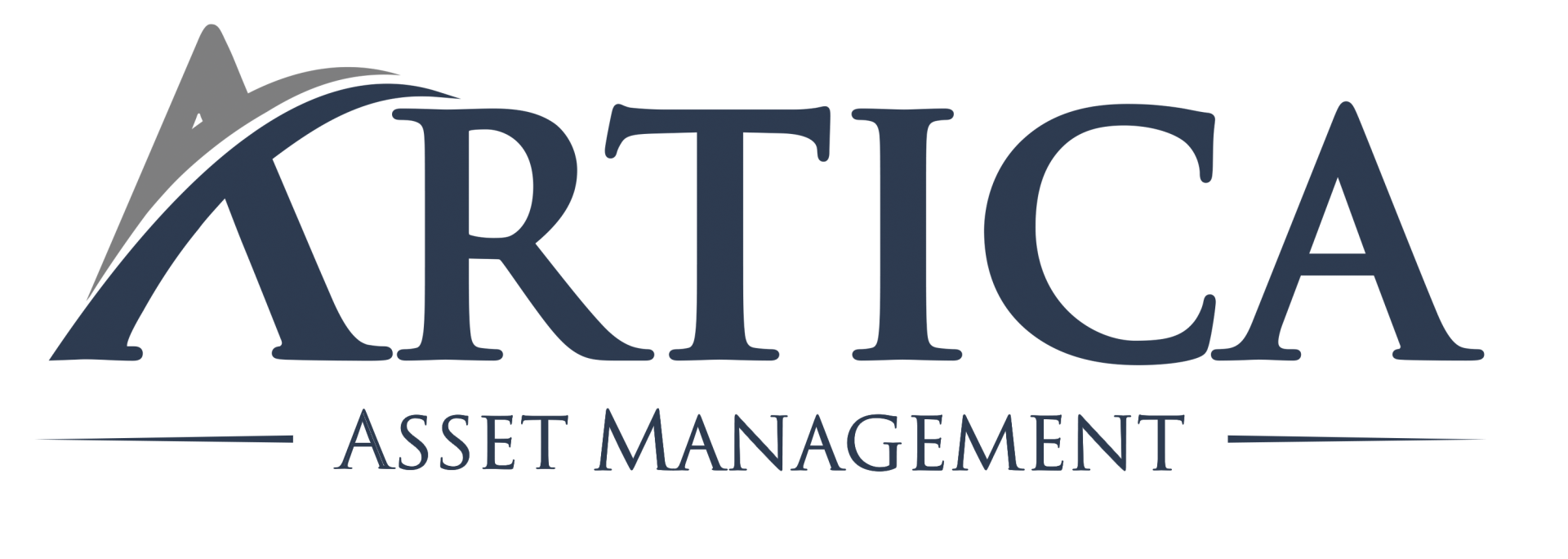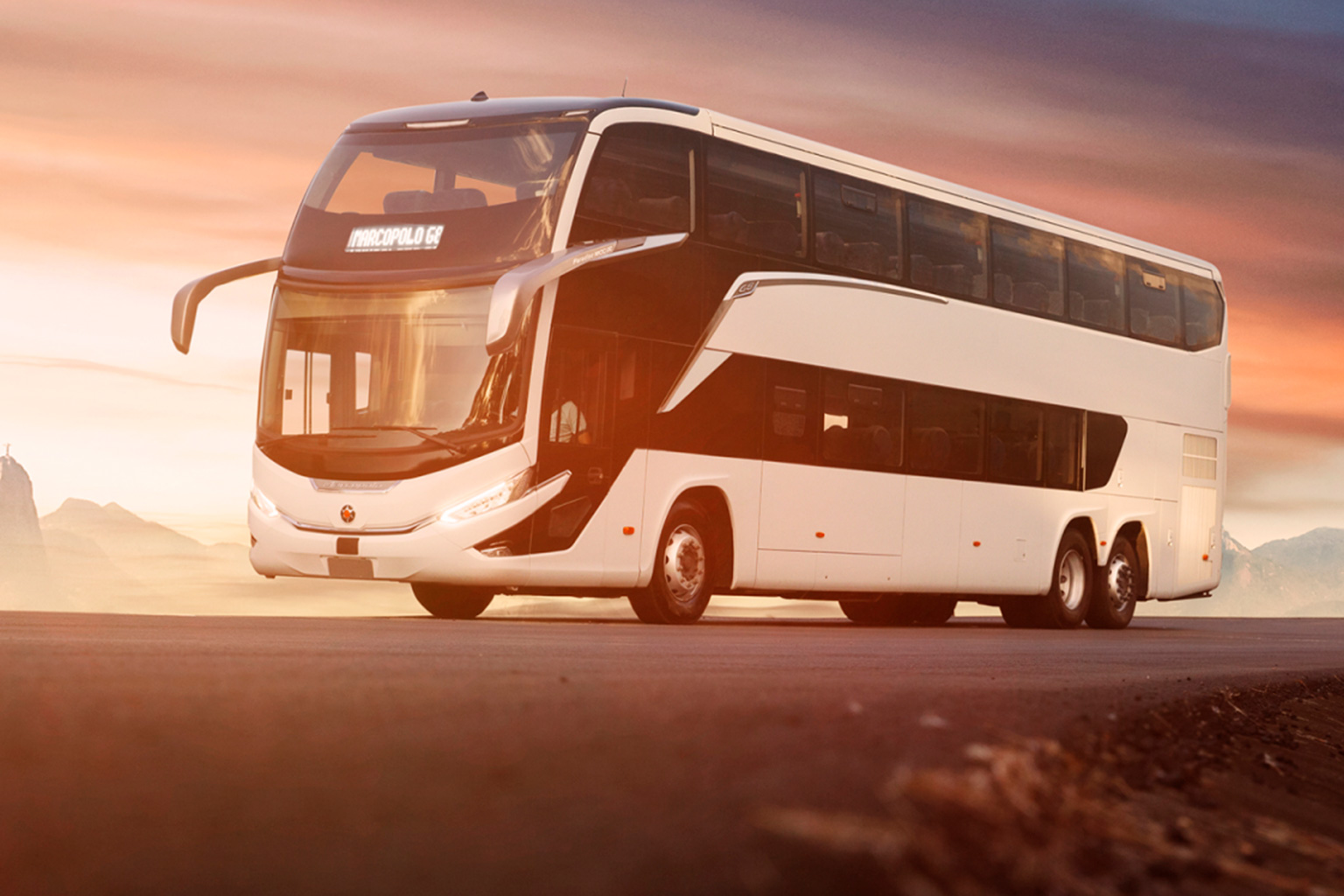dear investors,
In this letter, we would like to share our investment thesis in Marcopolo (POMO4), a stock we bought between 2019 and 2021 and today constitutes a relevant position in our portfolio.
It is not so common for managers to share investment theses still in their portfolio, largely because of the risk of making a public mistake if the future turns out to be contrary to our expectations, but we believe that this transparency will help our shareholders (and potential new shareholders) to visualize what we consider it a good investment thesis. So we decided put our mouth where our money is!
This thesis, like any other, has its risks. What we look for are investment opportunities where the probability of gain is substantially greater than the probability of loss. We will briefly explore here the main factors that led us to the conviction that this is the case in Marcopolo.
The idea of investing in Marcopolo
Marcopolo is one of the global leaders in the bus body sector. With 12 factories in 8 countries, it manufactures around 10% of the new bodies sold worldwide. In Brazil, Marcopolo serves around half of the domestic market.
At first glance, it doesn't seem like such an attractive sector. The product is not highly technological, the market is not booming and the theme of bus bodies is far from the headlines of newspapers. However, what caught our attention was the fact that the company multiplied its shareholders' investment by 80x (32% per year) in the 16-year period between 1998 and 2013. After that, the entire sector entered a lean period and the Marcopolo returned 0.7x its shareholders' capital between January 2014 and August 2021 (-5% per year). Long time of bad results, right? But we are left with the 80x on our minds and the question of whether the company could have a new era of glory. We decided to study the case further.
In this letter, we will present a summary of our analyzes related to Marcopolo's business in Brazil because, despite the export revenue being quite relevant, it is dispersed among several countries and, thus, individually, Brazil is by far the most relevant market for the company .
Pre-pandemic history
The bad season for Marcopolo, and the entire bus body sector, began in the second term of the Dilma government. From 2015 onwards, the demand for new bus bodies in the country dropped sharply. In large part, this drop was the side effect of sales above the sustainable level, especially between 2008 and 2014, stimulated by subsidized credit for the purchase of buses (FINAME).
In 2015, the offer of FINAME lines for the purchase of buses was reduced to R$ 6.5 Bi (vs. R$ 20 Bi in 2013 and 2014) and the volume of purchases of new buses dropped to the level of two decades ago.
Figure 1: Domestic Bus Sales
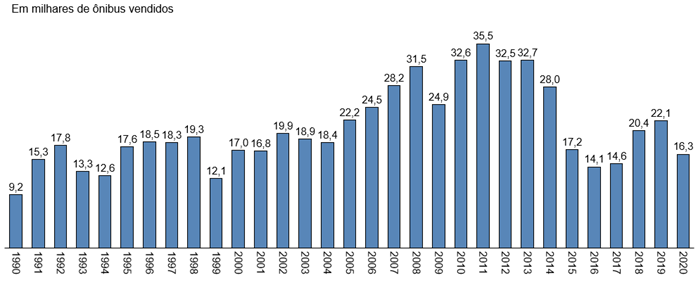
This low demand remains to this day. However, if the era of subsidized credit led to a renewal of the bus fleet, this long period of low sales led to its aging. This tends to pressure the demand for new buses because, after a certain age of the vehicle, maintenance to keep it in good condition becomes more expensive than replacing it with a new one. Thus, two questions arose: what is the condition of the current bus fleet in Brazil? And what should be the normal level of annual bus sales to maintain an adequate fleet for the country?
Bus fleet today
| In 2020, Brazil had 389,000 buses in circulation, the same number of buses in circulation in 2014. However, the average age of the fleet in this period rose from 8.9 years in 2014 to 10.8 years in 2020. Brazilian bus fleet is older than it has been in the last 12 years. Another reference that also points in the direction that the current fleet is too old is data on the average age of the urban bus fleet in large capitals, published by NTU[1]. According to this historical series, the current fleet is older than it has been in the last 25 years. With that, we have some comfort in saying that the fleet is really old and soon there should be an incentive to buy new buses to renew it. | Figure 2: Bus fleet in circulation
Source: Sindipeças |
Figure 3: Evolution of the average age of the fleet of urban bus systems (1995-2019)
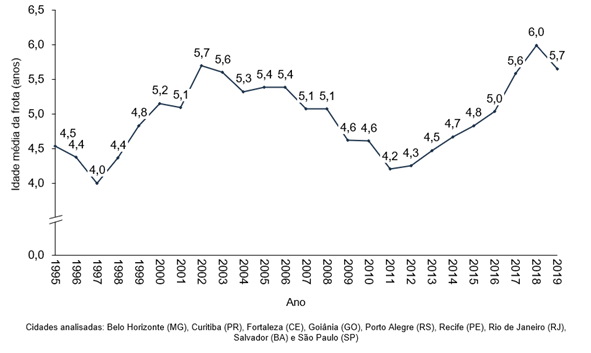
Normal level of demand
The question remains of what the sales volume of new buses should be to keep the Brazilian fleet at an adequate age and size. For this estimate, we study long-term trends in the passenger transport sector and come to the conclusion that bus use is slowly falling. Thus, we project the bus fleet to drop from 387,000 units in 2020 to 333,000 in 25 years, which, despite seeming subtle, represents a 20% drop in the number of buses in circulation per each thousand inhabitants in the country (from 1.82 buses / thousand inhabitants in 2019 to 1.46 in 2045).
Figure 4: Bus fleet in Brazil and # of buses / thousand inhabitants
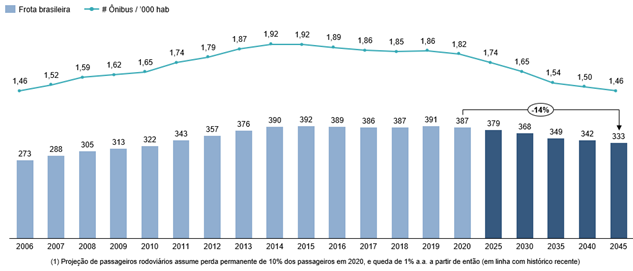
Source: Sindipeças and BIGE; arctic projections
With this fleet size projection and considering statistics on the probability of a bus being retired according to its age[1], we estimate that, in order to maintain the fleet at the current average age (10.8 years), a volume of around 21,000 new buses per year is required. This volume could be higher, considering that the “normal” age of the fleet seems to be closer to 9 than 11 years and, in this case, the sales volume could reach up to 30,000 new buses per year. However, the risk of being conservative in market projections is much less dangerous for an investor than the risk of being optimistic, so we kept the volume of 21,000 new buses per year as a reference in our analyses.
First stock purchases
In 2019, the scenario we saw was that the aging of the fleet at some point would force the resumption of demand for new buses to the estimated break-even level, in the range of 21,000 new units sold per year. Allied to this, the bus manufacturing sector was consolidating and Marcopolo was increasing its market share. In 2016, Marcopolo bought Neobus and now has about half of the bus market in Brazil, with one detail: CAIO, the second largest manufacturer, is controlled by the same shareholders as the company that operates urban bus lines in São Paulo and a large part of its income comes from this captive demand. In the broad market, Marcopolo was the clear leader.
Figure 5: Market Share

Source: FABUS
In addition to being a leader in sales volume, Marcopolo is also able to sell its buses for a price 10-20% higher than its competitors. When a company offers the most expensive product and yet has the highest market share in volume, it is usually a good sign, as it indicates that the market recognizes that your products have greater value. We spoke with people from the sector, especially those responsible for purchasing new buses for companies operating urban and road lines, and the reports corroborated our hypothesis: the general perception is that the quality of Marcopolo buses is superior, with greater durability and greater acceptance in the used bus market.
Anyway, based on the thesis of the resumption of sales volume due to the aging of the fleet, Marcopolo's sustainability in its leadership position and reasonably cheap share prices, we started investing in August 2019. We certainly did not foresee the pandemic, which broke out in March 2020 and made the stock drop a lot, along with the rest of the stock market. Fortunately, the position we had in our portfolio was not that large and we had bought at a much lower price than the average price in February 2020, on the eve of the lockdown. But yes, it was sad to see our precious accumulated profit through February evaporate in March. Anyway, we made the decision to keep the shares in the portfolio, imagining that the lockdown it would not remain for many years (our base case envisaged a resumption only in 2023).
Impact of the Pandemic
What happened is not difficult to imagine. With the circulation restrictions due to covid-19, the flow of bus passengers brutally decreased, soon the number of buses in circulation was also reduced and the demand for new buses fell. Very. To make matters worse, the price of steel rose and the company even suffered from a lack of chips for vehicle production, factors that put pressure on costs at a time of already low demand.
Even with Marcopolo having its revenue diversified across several countries, the pandemic had a similar and simultaneous impact on all of them and there was no escape. The company carried out a cost reduction program, gave collective vacations and took advantage of the low demand time to improve a series of internal processes, but its financial results suffered a lot.
Despite the certainly bad impact, it was not catastrophic. Marcopolo continues with a healthy capital structure and leadership in its market, an even more sustainable position given that smaller and less capitalized competitors suffered more with the crisis. But don't mistake us for optimists.
Our point is just that the company is not going to die from covid and, in this case, where there is life there is future cash flow generation and, therefore, it can be a good investment at the right price, already considering the negative impact of the crisis on Marcopolo. POMO4 reached the price level of R$ 5.00 before March 2020 and now (Sep/21) it is close to R$ 2.75, a drop of 45%. In our view, the stock was cheap even taking into account the very unfavorable scenario in the short term.
We ended up taking advantage of this price drop to buy more shares throughout 2020 and 2021. Not coincidentally, some shareholders in Marcopolo's controlling group, including the company's current CEO, also bought more shares in the midst of the pandemic. On January 6, 2021, they announced the purchase of 12 million shares, the share price on that date was R$ 2.86 (purchase value around R$ 34 million). Now, coincidentally, their purchase price was very close to the current POMO4 price.
Prospects for the future
The big question in this thesis is what will be the flow of bus passengers in the future (urban and road). If the flow returns to normal, the number of buses in circulation will increase and will boost the demand for new buses to replace the old units, when the maintenance cost begins to be equated with the installment payment of the purchase of a new bus. We know that Marcopolo is the best positioned company to capture this market recovery, but there is no way of knowing when this will happen. This is the main risk of the thesis: the flow of bus passengers takes a long time to return to pre-pandemic levels. Here, we enter more arid territory, but let's lay out our vision.
We don't believe in the "new normal". We believe that, over time, news about the pandemic will cease, restrictions will be lifted and the risk associated with covid-19 will fall into oblivion, like so many other risks in our daily lives that never stopped us from leaving our homes. (traffic accidents, robberies, all other existing diseases, etc.). But let's get to what we think about passenger transport.
In work-related transport, a very small part of existing professions can be exercised from home. Even in these, the home office is already starting to prove not as good as the enthusiasts of the beginning of the lock down preached and some side effects appear: communication between colleagues worsens, dissemination of culture is impaired, engagement is slowly reduced… Several companies are already calling their professionals back to the offices, sometimes still on an optional basis, but the vaccination will soon be completed and legal restrictions must be lifted. Perhaps some companies keep certain positions on a permanent basis. home office, but we believe that the number of people in these cases will not be large enough to interfere with the general volume of bus passengers.
In leisure-related transport, in countries where vaccination is more advanced, the tourism sector already sees a strong recovery in the number of passengers on trips, in some cases to levels even above pre-pandemic levels. This seems to be linked to repressed demand and easily echoes with our direct observations: how many people have not canceled a trip during the pandemic period, but still intend to do so as soon as conditions allow? It seems to us that restrictions are being relaxed even more quickly in urban leisure and, since any plan to meet friends requires traveling to the place where they will be and not everyone has their own car, many will go by bus. More broadly, the desire to travel and seek out social life are intrinsic to human nature, and whether it's slow or fast, we believe people will return to their normal ways of life. Living locked up at home is not anyone's ideal.
Finally, with the flow of passengers returning to normality, we should see Marcopolo's results recovering to healthy levels. We will only suffer significant losses in a scenario where the flow of passengers remains low for a very long term, which seems unlikely to us. If the recovery is slow, the return will probably not be as happy, but it should still be positive.
Marcopolo's current price
At the close of the last day of September, Marcopolo's market capitalization was R$ 2.6 billion, with an implicit P/E (Price/Earnings) multiple of 9.3x taking into account the net income for 2019 (R$ 242 million), in the pre-pandemic scenario. However, from this amount R$ 0.7 billion refers to Marcopolo's stake in Newflyer[1]. Without Newflyer, the value would be R$ 1.9 Bi, with the P/E multiple (Price/Earnings) implied 9.0x taking into account 2019 net profit (R$ 215m, ex-Newflyer). Remembering that in 2019 the number of new buses produced in Brazil was 17.9 thousand, still below the 19 thousand new buses per year that we conservatively estimate to be the break-even volume for this market.
If the market converges to this level and Marcopolo is able to maintain its marketshare, we estimate its net profit to reach R$ 300 million. The company already achieved a net profit of R$ 343 million in 2011, which, adjusted for inflation, would equal around R$ 600 million today. As this was the era of subsidized credit for the purchase of buses, we do not believe that the result will return to the same level, but the R$ 300 million seems feasible. Considering that between 2010 and 2019 (last 10 years excluding pandemic period) Marcopolo's average P/E multiple was 20.2x, its market value could reach R$ 6 billion. This is the earning potential that we are seeing.
In addition, the series of adjustments made by Marcopolo in its internal processes, closing some plants that had low utilization and reducing its workforce by more than 1/3, may result in operating margins above their historical level, which could increase the company's net profit beyond the R$ 300 million we estimate.
Our reviews of valuation are much deeper than this rationale of multiples and based on discounted cash flow models, but the results of both approaches point in the same direction. We always like to cross-check with simplified approaches like this one, to ensure we don't lose reason amidst the details and complexities of the most technically sophisticated analyses.
Final considerations
In short, we believe that Marcopolo will remain at the forefront of the bus body manufacturing sector, with around 50% in the Brazilian market and market shares relevant in 7 other countries. In Brazil, its main market, there are indications that the demand for new buses should resume as soon as the flow of passengers returns to pre-pandemic levels, a recovery that we believe is very likely.
Despite this perspective, Marcopolo is currently in the midst of a perfect storm: low demand, pressured costs and production interruptions. As a result, the share price dropped to levels that we consider quite cheap and an asymmetry between risk and return emerged for an investment with a long-term horizon: the company continues to have a solid capital structure even in the face of adversity and we understand that the probability of Marcopolo having new negative surprises is low (given that almost everything bad has already happened); on the other hand, the company is well positioned to reap the benefits of a market recovery and the return potential in this scenario is quite relevant.
So we decided to follow the advice of Baron de Rothschild: Buy when there's blood in the streets, even if the blood is your own!
[1] National Association of Urban Transport Companies
[2] Published by Sindipeças
[3] Marcopolo holds 9.3% in Newflyer, which is worth CAD 1.7 billion on the Canadian stock exchange. With the current exchange rate of BRL/CAD = 4.29, Marcopolo's stake is worth R$ 675 million. (Amounts as of September 30, 2021)
Disclaimer
The information contained in this website/document does not constitute, nor should it be interpreted as advice, recommendation, offer and/or solicitation for the purchase or sale of shares, bonds, securities and/or any other financial instruments.
